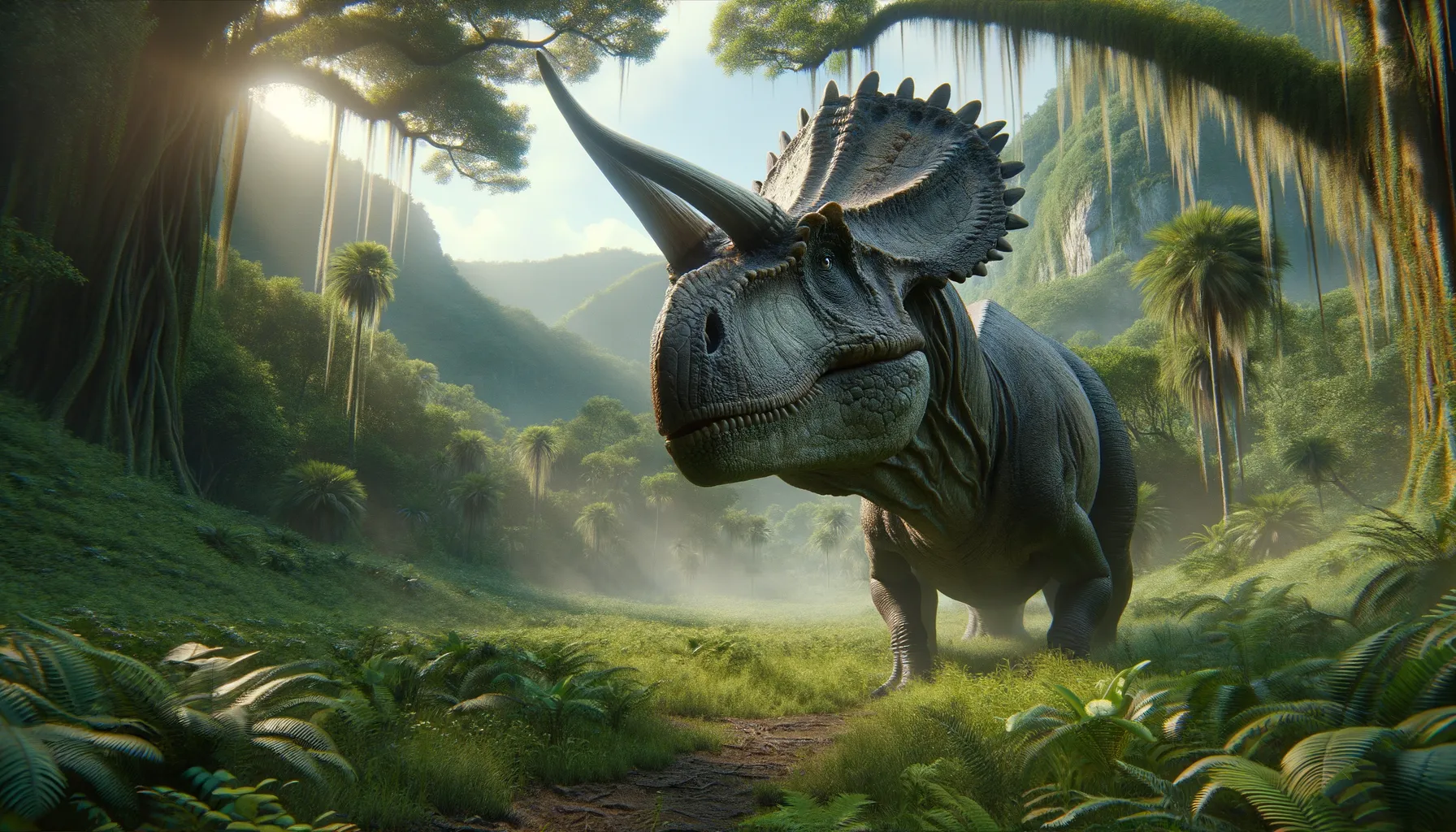
Eucentrosaurus
Horned giant of ancient times!
Period
Cretaceous
Length
Approximately 20 feet long.
Height
About 6 feet tall.
Weight
Around 2 tons.
Eucentrosaurus was a large herbivorous dinosaur that roamed the Earth during the Late Cretaceous period. It was known for its impressive array of horns and frills, which may have been used for defense or display. As a plant-eater, it thrived in lush environments with an abundance of vegetation. Its fossils provide valuable insights into the ecosystems of its time.
Diet
Eucentrosaurus primarily fed on low-lying plants, utilizing its beak-like mouth to clip vegetation. Its strong jaws allowed it to chew tough, fibrous plants efficiently.
Hunting
Being a herbivore, Eucentrosaurus did not hunt for other animals. Instead, it foraged for plants and relied on its size and horns for protection against predators.
Environmental challenges
Eucentrosaurus faced challenges like fluctuating climates, which could affect the availability of food sources. Predators also posed a significant threat, requiring Eucentrosaurus to stay vigilant. Changes in vegetation patterns demanded adaptability in its diet.
Speed
Eucentrosaurus moved at a slow pace.
Lifespan
It lived for several decades.
First discovery
Discovered in the early 20th century.
Fun Facts
- Eucentrosaurus was a plant-eating dinosaur that lived during the Late Cretaceous period, around 75 million years ago.
- This dinosaur had a large frill at the back of its head, which was likely used for display or defense.
- Eucentrosaurus was part of the ceratopsian family, which includes the famous Triceratops.
- It had a parrot-like beak that helped it chop through tough, fibrous plants.
- Unlike some of its relatives, Eucentrosaurus had a single large horn on its nose, giving it a distinct look.
- Fossils of Eucentrosaurus have mostly been found in what is now Canada, specifically in Alberta.
- Eucentrosaurus traveled in herds, which helped protect them from predators like tyrannosaurs.
Growth and Development
Eucentrosaurus likely experienced rapid growth during its early years, fueled by abundant plant resources. As it matured, the development of its characteristic horns and frills would have become more pronounced. This growth may have played a role in social dynamics or mating displays.
Habitat
Eucentrosaurus inhabited regions with dense vegetation, such as forests and floodplains. These environments provided ample food and shelter. Its presence in such habitats contributed to the overall ecosystem balance.
Interaction with other species
Eucentrosaurus coexisted with various species, including other herbivores and predators. Its horns and size may have deterred predators, allowing it to focus on foraging. It might have formed herds for protection and social interaction.
Natural lifespan
Eucentrosaurus had a lifespan extending over several decades.
Reproduction
Eucentrosaurus likely laid eggs, as was common for its clade. Parental care might have involved guarding the nest from predators, ensuring better survival of offspring.
Social behaviour
Eucentrosaurus possibly lived in groups, which could offer advantages like collective vigilance against predators. Social structures might have been influenced by the display features of its frills and horns.
Fossil locations
Fossils of Eucentrosaurus have been primarily found in North America. These findings provide insights into the distribution and environmental preferences of this dinosaur. The exact locations help paleontologists piece together Late Cretaceous landscapes.
